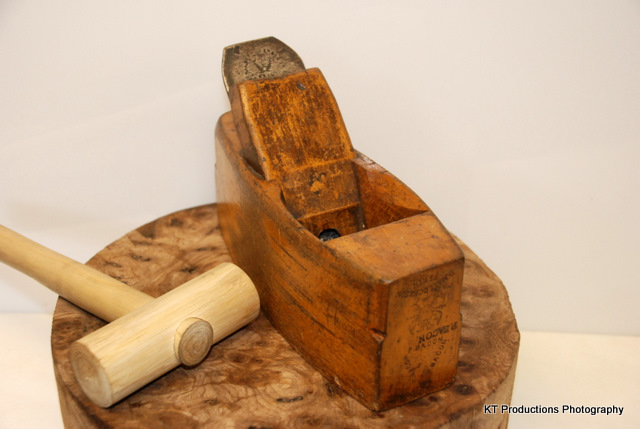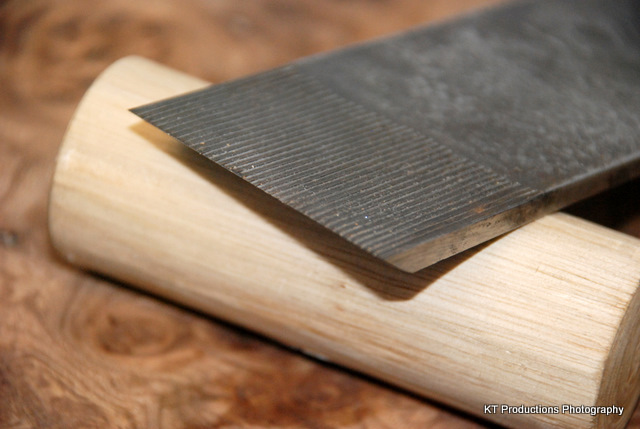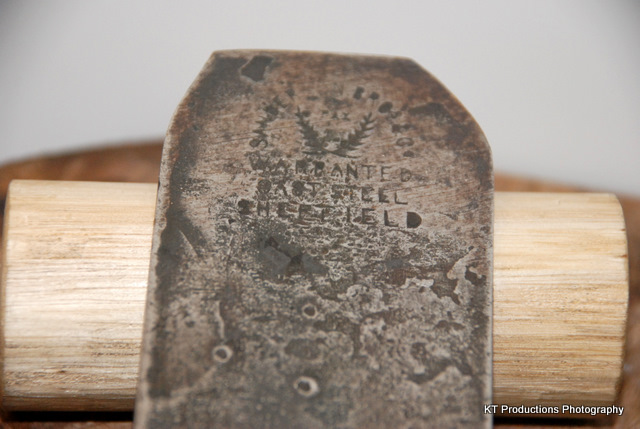jimi43
Established Member
Hi Stewie
Another masterpiece from your superb stable!
The finish is stunning...you sure have a lot of fine woods in your neck of the...um...woods! :mrgreen:
On the subject of "toothing" irons...Back in the days when I made guitars it was common practice to use a toothing iron to thickness very thin sheets such as rosewood backs and spruce fronts by hand and I found that the best angle for me was about 55 degrees as you have. But it still worked pretty well in an old Malloch of Perth coffin smoother body i found it in...

It's got a fine set of gnashers....

...and is made by Sanderson and Sons - Sheffield

I must admit...I originally thought their only function was to work difficult grain and it was only later when I had a chat to my cabinetmaker neighbour that he told me he used his for roughing the substrate prior to veneering.
Anyway...lovely plane...superb finish and attention to detail I've come to expect from you my friend. =D>
Jimi
Another masterpiece from your superb stable!
The finish is stunning...you sure have a lot of fine woods in your neck of the...um...woods! :mrgreen:
On the subject of "toothing" irons...Back in the days when I made guitars it was common practice to use a toothing iron to thickness very thin sheets such as rosewood backs and spruce fronts by hand and I found that the best angle for me was about 55 degrees as you have. But it still worked pretty well in an old Malloch of Perth coffin smoother body i found it in...

It's got a fine set of gnashers....

...and is made by Sanderson and Sons - Sheffield

I must admit...I originally thought their only function was to work difficult grain and it was only later when I had a chat to my cabinetmaker neighbour that he told me he used his for roughing the substrate prior to veneering.
Anyway...lovely plane...superb finish and attention to detail I've come to expect from you my friend. =D>
Jimi
































